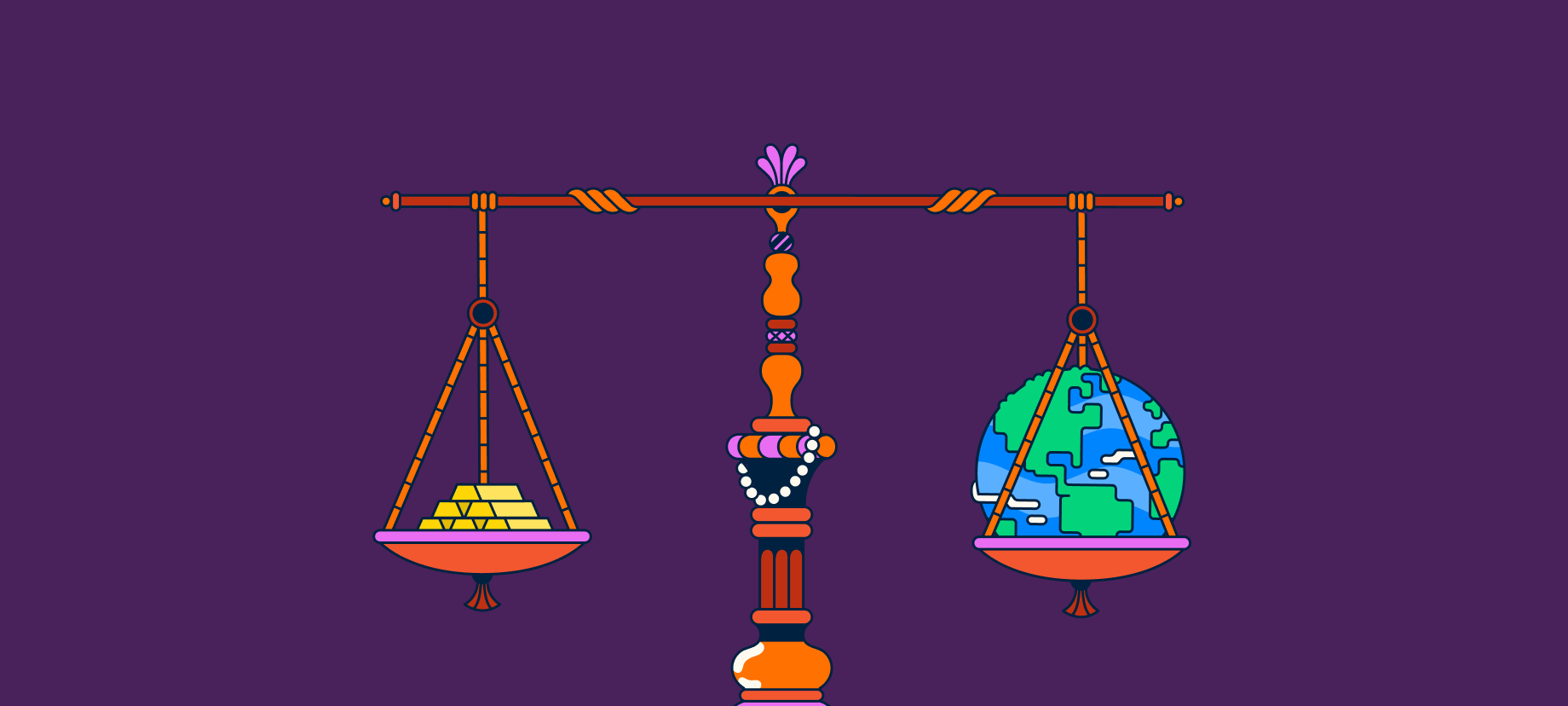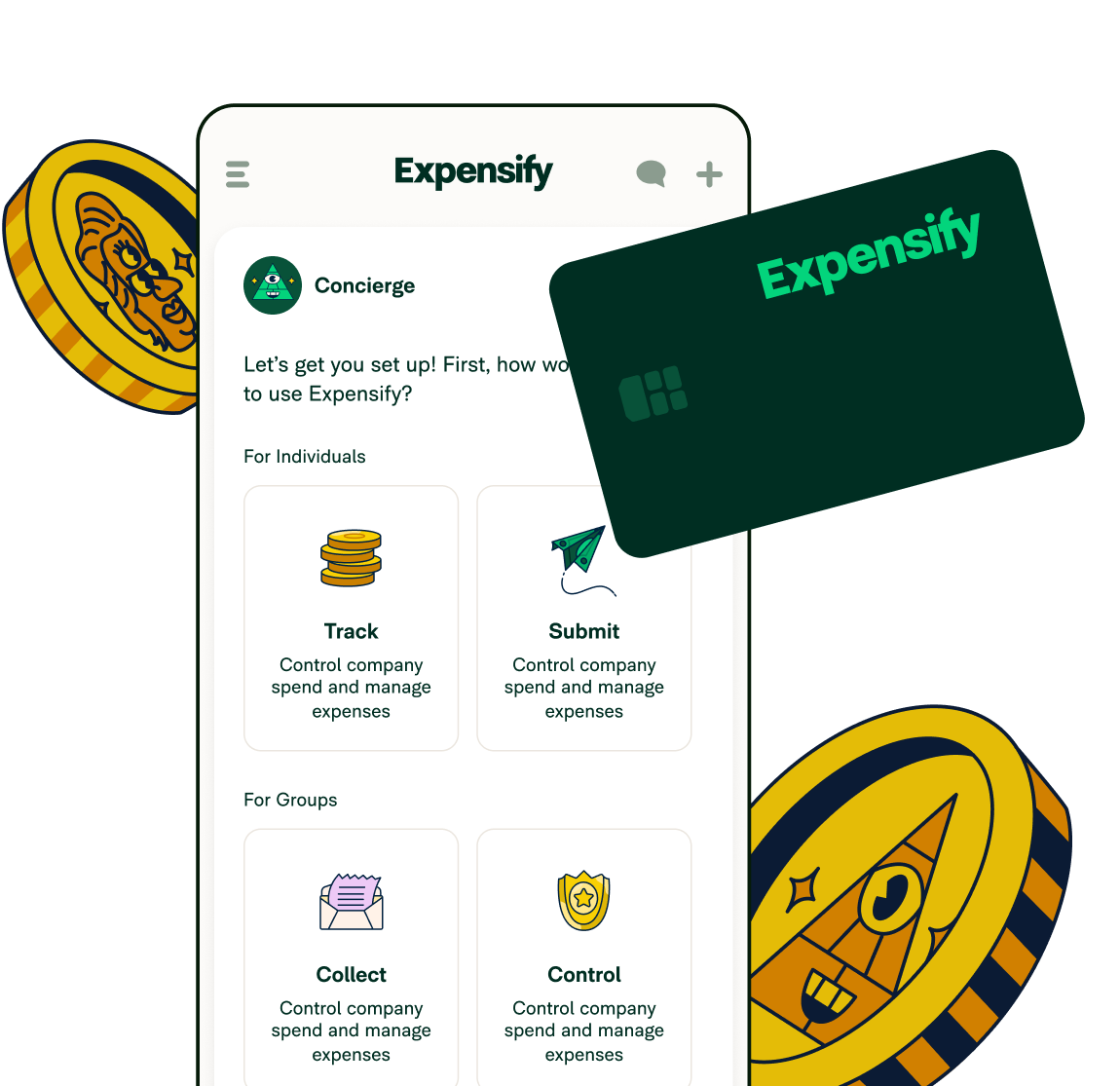Navigating tariff turmoil: How small businesses can streamline expenses and stay afloat

The latest Trump tariff announcement has reignited the global trade war, and small businesses are already feeling the heat. As supply chains adjust and costs climb, it's never been more important to stay on top of your spending.
Whether you're dealing with business tariff chaos or trying to understand how tariffs affect businesses, smart expense management can help you weather the storm.
Key takeaways
- Tariffs are back and small businesses are first to feel the squeeze as trade war tensions escalate.
- Companies using realtime expense tools reduce unapproved spend by up to 45% according to financial management studies.
- Expensify helps SMBs track spend in realtime cut waste, and stay agile even when the economy throws curveballs.
- Delayed visibility into tariff-related cost increases leads to cash flow issues and makes monthly reconciliation harder.
- Automate your expense tracking and use category-level insights to flag overspending fast.
Tariffs are back – and small businesses are the first to feel the squeeze
How do tariffs affect small businesses? The answer is swift and painful. President Trump’s tariffs mean higher costs and more complexity for small operations. If you rely on imported goods, you're likely paying more, and suppliers are often passing those added costs down the chain.
According to NerdWallet, many small businesses are seeing cost spikes of 10-20% due to the current tariff impact on small business operations.
Without the cushion of large corporate margins or diversified supplier networks, small teams are feeling the small business tariff impact the most.
With 62% of small business owners citing rising costs (inflation) as their primary concern, tariff-related expenses contribute significantly to this burden.
What tariffs actually mean for small businesses
How do tariffs affect businesses? Understanding the mechanics of Trump's tariffs and US trade policy helps small business owners prepare for what's coming. Let's break down the basics for business owners who may not fully understand how business tariff policies work.
What's a tariff?
What does tariff mean in business? A tariff is essentially a tax that governments impose on imported goods when they cross international borders.
For small businesses, this translates to higher costs on inventory, materials, or components sourced from overseas – especially from countries targeted by United States tariffs.
When you import products subject to tariff codes, you're responsible for paying these additional fees on top of your regular costs. This creates a ripple effect: higher procurement costs, squeezed margins, and often the need to raise prices for your customers.
Types of tariffs
What are the four types of tariffs? Understanding these helps you anticipate costs and plan accordingly:
Ad valorem: A percentage of the item’s value. For example, a 10% ad valorem tariff on a $1,000 product means you pay $100 in duties.
Specific: A fixed fee per unit, regardless of value. Say you're importing 1,000 units of a part with a $5 tariff each – you’ll owe $5,000, even if the item’s price drops.
Compound: A mix of ad valorem and specific. You might pay a flat $2 per item plus 5% of its value.
Tariff-rate quota: Lower tariffs up to a certain quantity, then higher rates after that threshold. Think of it like a bulk limit: the first 10,000 units might carry a 5% tariff, but anything above that jumps to 15%.
Tariff codes determine which category your imports fall under, and getting these classifications right is crucial for accurate cost planning. Each product has a specific Harmonized Tariff Schedule code that determines the exact rate you'll pay.
What's an example of a tariff? The 25% Chinese tariffs on US goods, particularly electronics, represent a real-world case of ad valorem tariffs. If you're importing $40,000 worth of components, you're now paying an additional $10,000 in duties.
How tariffs affect small businesses
Tariffs don't just hit your invoices; they create cascading effects throughout your operations. Supply chain delays, higher shipping fees, and unpredictable vendor pricing all chip away at your bottom line.
The tariff impact on business extends beyond direct costs to include administrative burden, cash flow disruption, and strategic planning complications.
This business tariff chaos makes smart expense management more critical than ever. When costs are fluctuating and margins are tight, you need realtime visibility into every dollar spent.
How to assess your risk: Key areas tariffs can hit in your business
Here are the primary ways the current trade war and tariff in business policies might affect your operations:
Overseas-sourced products: If you import inventory, parts, or raw materials, you're likely paying more due to tariffs. The greater the financial impact, the more you rely on foreign suppliers, especially from tariff-targeted countries.
Increased vendor rates to offset tariffs: Even if you're not importing directly, your suppliers might be. Many vendors pass their added costs along to you, so watch for sudden price hikes or changes in contract terms.
Shipping and customs fee hikes: Tariffs can slow down supply chains, leading to longer customs processing times and higher fees. Delays and surcharges can add unexpected costs that eat into margins and disrupt delivery timelines.
Currency shifts inflating international spend: Tariffs can trigger volatility in foreign exchange markets. If you're paying vendors or contractors in other currencies, fluctuations in rates can drive up the cost of international transactions and complicate budgeting.
Use custom financial reporting to analyze vendor and category-level spend patterns, helping you identify which areas of your business face the greatest tariffs for small business risk.
4 smart ways small businesses can fight back
Here's how to turn expense management into your competitive advantage during tariff turmoil:
1. Audit all vendor spend
Use tools that let you sort spend management by vendor and category. When suppliers raise prices due to small business tariffs, you need data to negotiate effectively or find alternatives quickly. Track spending patterns to identify which vendors are most affected by Trump tariff deals and policy changes.
2. Negotiate smarter with suppliers
Set budget alerts and track overages before they spiral. With budgets and realtime monitoring, you can spot tariff-related cost increases immediately and renegotiate terms or payment schedules to maintain cash flow.
3. Automate and consolidate your expense tracking
Manual expense tracking fails when costs are changing rapidly. Receipt scanning apps and automated categorization help you capture every tariff-related cost increase without missing critical details. This is especially important for tracking customs fees and shipping surcharges that might otherwise slip through manual processes.
4. Use smart cards with realtime controls
Control team spending with preset limits and approval flows using the Expensify VisaⓇ Commercial Card. When business tariff costs are unpredictable, having instant spending controls prevents budget overruns and gives you immediate visibility into cash flow impacts.
When tariff costs can change overnight, manual expense tracking simply can't keep up. Automated systems give you the speed and accuracy needed to respond to trade war disruptions in realtime.Common questions about optimizing your operating expenses
Common questions about business tariffs
-
Ad valorem tariffs are the most common. These are calculated as a percentage of a product's total value. For example, a 10% tariff on a $1,000 item would add $100 in duties. They're widely used because they scale with the cost of goods, making them easier for governments to apply across various industries.
-
Yes. Tariffs increase the cost of imported goods, which often forces businesses to raise their prices to maintain margins. Over time, this can ripple through the economy and contribute to inflation, especially when businesses pass the added costs on to consumers.
-
It depends on your industry and supply chain. Tariffs can benefit domestic manufacturers by reducing foreign competition, but for businesses that rely on imported goods or global supply chains, they usually lead to higher costs and added complexity from business tariff chaos.
-
By making foreign products more expensive, tariffs can create a competitive edge for local producers. This can help drive demand for domestic goods and services, potentially boosting local economies and job creation, especially in industries that have been undercut by cheap imports.
-
Most US businesses would prefer tariffs that protect critical domestic industries without driving up the cost of essential inputs. In other words, they support tariffs that level the playing field without disrupting their own supply chains or profit margins.
Streamline your small business expenses with Expensify
You can't predict US trade policy, but you can control how your business responds. The fastest, easiest, and simplest way to manage expenses during tariff turmoil is with automated tools powered by AI that give you realtime visibility and control.
Expensify helps you track tariff-related cost increases instantly, automate vendor spend analysis, and maintain tight budget controls, no matter what the global trade war throws your way.
Ready to get started? Enter your information below, and we'll take it from there.








